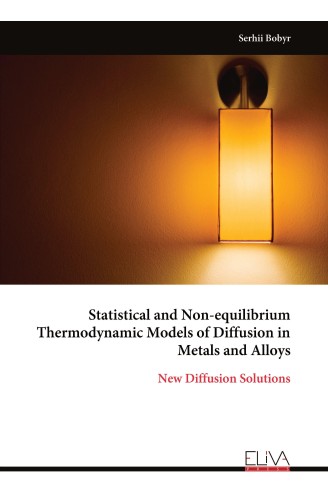Description
The diffusion of hydrogen, carbon and alloying elements in metals is of great importance because it determines the engineering problems associated with the creation and use of high-strength steels, reactor materials, alloys for transporting and storing hydrogen, etc. The collection of works develops new models for calculating the diffusion parameters of alloying elements in metals and alloys as a complex system, including the mutual influence of alloying elements and applied to calculate the parameters in advanced alloys. A nonequilibrium thermodynamic approach has been developed for calculating diffusion processes in multicomponent alloys, including the diffusion of basic elements and carbon. A diffusion-vacancy mechanism describing the process of graphitization of cast iron has been developed. Common expressions for calculation of cross-factors, motive forces and fluxes in the Onsager’s equations in a multicomponent thermodynamic system are suggested. This makes it possible to carry out calculations of diffusion processes taking into account the mutual influence of elements and phase transformations in the system. In the developed statistical calculation model (SCM) the pre-exponential factor of hydrogen and carbon diffusion in metals has been calculated from first principle of statistical physics. Activation energy of hydrogen and carbon diffusion in all metals is determined by correlation with the melting point of these metals. For temperatures below 1000 K, the SCM model uses activation energies calculated from first principles. For the diffusion of hydrogen and carbon in metals, very good agreement was obtained between experimental values and the SCM model over a wide temperature range. The SCM model allows, in contrast to existing models, to predict the values of the diffusion parameters of hydrogen and carbon in alloys.This project was funded by the Swedish Foundation for Strategic Research (SSF).




